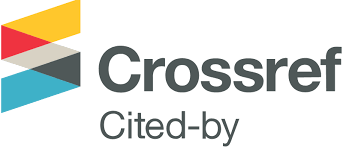Synthesis of 1,2-benzoxathiine 2,2-dioxide derivatives using aliphatic aldehydes and assessment of their antimicrobial activity
DOI:
https://doi.org/10.24959/ophcj.17.927Keywords:
1, 2-benzoxathiin-4(3H)-one 2, 2-dioxide, 2-amino-4H-pyran, three-component interaction, ammonium salt, antimicrobial activityAbstract
Nowadays the problem of the antimicrobial resistance promotes the search of new chemical core-structures with the antimicrobial properties.
Aim. To study the interaction of 1,2-benzoxathiin-4(3H)-one 2,2-dioxide with active methylene nitriles and aliphatic aldehydes and assess the antimicrobial activity of the compounds obtained.
Results and discussion. 1,2-Benzoxathiin-4(3H)-one 2,2-dioxide as a structural analog of 1,3-dicarbonyl compounds was used in the three-component interaction with aliphatic aldehydes and active methylene nitriles. In the case of malononitrile the target compounds were formed. When using ethyl cyanoacetate the only isolated product was triethylammonium salt that could be also obtained by the two-component reaction of 1,2-benzoxathiin-4(3H)-one 2,2-dioxide with aliphatic aldehydes. The study of the antimicrobial properties showed the higher activity of the compounds studied than in the reference drugs, especially against gram-positive strains.
Experimental part. The series of 2-amino-4-alkyl-4,6-dihydropyrano[3,2-c][2,1]benzoxathiin-3-carbonitrile 5,5-dioxides and triethylammonium 3-[1-(4-hydroxy-2,2-dioxido-1,2-benzoxathiin-3-yl)alkyl]-1,2-benzoxathiin-4-olate 2,2-dioxides was synthesized. The antimicrobial activity of the compounds obtained was determined by the agar “well” diffusion method.
Conclusions. It has been shown that 1,2-benzoxathiin-4(3H)-one 2,2-dioxide as a structural analog of 1H-2,1-benzothiazin-4-one 2,2-dioxide can be used in similar three- and two-component reactions, but its reactivity is less due to the replacement of the 1-N-R-group with an O-atom. The novel compounds obtained exceeded the antimicrobial activity of the reference drugs, and were more active against gram-positive bacteria in contrast to isosteric derivatives of 1H-2,1-benzothiazin-4-one 2,2-dioxide that were active against gram-negative strains and fungi.
Downloads
References
- Vozvrastaiushchaia ugroza razvitiia antimikrobnoi reziztentnosti (2013). WHO Library Cataloguing–in–Publication Data. Available at: http://
- www.who.int/patientsafety/implementation/amr/publication/ru/
- Antimicrobial resistance surveillance in Europe 2009. Annual Report of the European Antimicrobial Resistance Surveillance Network (2010). Stockholm:
- European Centre for Disease Prevention and Control (ECDC). Available at: https://ecdc.europa.eu/sites/portal/files/media/en/publications/
- Publications/1011_SUR_annual_EARS_Net_2009.pdf.
- Informe Anual de la Red de Monitoreo/Vigilancia de la Resistencia a los Antibióticos (2011). Washington: D.C., Pan American Health Organization.
- Available at: http://new.paho.org/hq/index.php?option=com_docman&task=doc_download&gid=14877&Itemid
- Polk, R. E., Fox, C., Mahoney, A., Letcavage, J., MacDougall, C. (2007). Measurement of Adult Antibacterial Drug Use in 130 US Hospitals: Comparison
- of Defined Daily Dose and Days of Therapy. Clinical Infectious Diseases, 44 (5), 664–670. doi: 10.1086/511640
- Birnbaum, D. (2003) Resistance CCoA. Antimicrobial resistance: a deadly burden no country can afford to ignore. Canada Communicable Disease
- Report, 29 (18), 157–164.
- Okeke, I. N., Klugman, K. P., Bhutta, Z. A., Duse, A. G., Jenkins, P., O’Brien, T. F., Laxminarayan, R. (2005). Antimicrobial resistance in developing
- countries. Part II: strategies for containment. The Lancet Infectious Diseases, 5 (9), 568–580. doi: 10.1016/s1473–3099(05)70217–6
- Globalnaia strategiia VOZ po sderzhivaniiu ustoichivosti k protivomicrobnym preparatam (2001). Zheneva: VOZ. Available at: http://www.who.
- int/drugresistance/WHO_Global_Strategy_Russian.pdf
- Lega, D. A., Filimonova, N. I., Geyderikh, O. G., Chernykh, V. P., Shemchuk, L. A. (2016). The use of aliphatic aldehydes in the synthesis of new pyran
- annulated derivatives of 1h–2,1–benzothiazin–4–one 2,2–dioxide via domino–type interactions. The antimicrobial activity of the compounds
- synthesized. Žurnal Organìčnoï Ta Farmacevtičnoï Hìmìï, 14 (2(54)), 29–40. doi: 10.24959/ophcj.16.889
- Lega, D. A., Filimonova, N. I., Zupanets, I. A., Shebeko, S. K., Chernykh, V. P., Shemchuk, L. A. (2016). The synthesis, anti–inflammatory, analgesic
- and antimicrobial activities of ethyl 2–amino–4–alkyl–4,6–dihydropyrano[3,2c][2,1]benzothiazin–3–carboxylate 5,5–dioxides and triethylammonium
- –[(4–hydroxy–1–ethyl–2,2–dioxido–1h–2,1–benzothiazin–3–yl)alkyl]–1–. Žurnal Organìčnoï Ta Farmacevtičnoï Hìmìï, 14 (4(56)), 3–11.
- doi: 10.24959/ophcj.16.900
- Schwender, Ch. F., Sunday, Br. R. (1978). Pat. 1977/4116961 US, U.S. Cl. 260/293.57, 260/327 S, 260/456 P. 1,2–Benzoxathiin–2,2–dioxides. Warner–
- Lambert Company. № 771,502; declared 24.02.1977 ; published 26.09.1978.
- Fravolini, A., Cecchetti, V., Fringuelli, R., Schiaffella, F. (1984). New Heterocyclic Ring System. XIV. 7,11–Dithiaoxasteroids Analogues. Heterocycles,
- (10), 2293. doi: 10.3987/r–1984–10–2293
- Tietze L. F. (1996). Domino Reactions in Organic Synthesis. Chemical Reviews, 96, 115–136.
- Chandralekha, E., Thangamani, A., Valliappan, R. (2013). Efficient atom–economical solvent–free one–pot multicomponent synthesis of 2–amino–
- H–benzo[b]pyrans catalyzed by solid base SiO2–OK as a reusable catalyst. Research on Chemical Intermediates, 41 (4), 1951–1966.
- doi: 10.1007/s11164–013–1322–x
- Litvinov, Y. M., Shestopalov, A. M. (2011). Synthesis, Structure, Chemical Reactivity, and Practical Significance of 2–Amino–4H–pyrans. Advances
- in Heterocyclic Chemistry, 175–260. doi: 10.1016/b978–0–12–386011–8.00003–4
- Lega, D. A., Gorobets, N. Y., Chernykh, V. P., Shishkina, S. V., Shemchuk, L. A. (2016). Peculiarities of 2–amino–3–R–4–aryl–4H–pyranes multicomponent
- synthesis derived from 1H–2,1–benzothiazin–4(3H)–one 2,2–dioxide. RSC Advances, 6 (19), 16087–16099. doi: 10.1039/c5ra24566d
- Coyle, M. B. (2005). Manual of Antimicrobial Susceptibility Testing. American Society for Microbiology. Washington: American Society for Microbiology,
- Performance Standards for Antimicrobial Susceptibility Testing; Twenty–Second Informational Supplement. Document M100–S22 (2012). CLSI,
- Wayne, PA, 32 (3).
- McFarland, J. (1907). The nephelometer:an instrument for estimating the number of bacteria in suspensions used for calculating the opsonic
- index and for vaccines. JAMA: The Journal of the American Medical Association, XLIX (14), 1176. doi: 10.1001/jama.1907.25320140022001f
Downloads
Published
How to Cite
Issue
Section
License
Copyright (c) 2017 National University of Pharmacy

This work is licensed under a Creative Commons Attribution 4.0 International License.
Authors publishing their works in the Journal of Organic and Pharmaceutical Chemistry agree with the following terms:
1. Authors retain copyright and grant the journal the right of the first publication of the work under Creative Commons Attribution License allowing everyone to distribute and re-use the published material if proper citation of the original publication is given.
2. Authors are able to enter into separate, additional contractual arrangements for the non-exclusive distribution of the journal’s published version of the work (e.g., post it to an institutional repository or publish it in a book) providing proper citation of the original publication.
3. Authors are permitted and encouraged to post their work online (e.g. in institutional repositories or on authors’ personal websites) prior to and during the submission process, as it can lead to productive exchanges, as well as earlier and greater citation of published work (see The Effect of Open Access).












